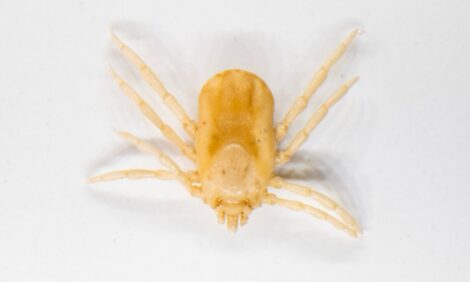



Harvesting Cereals for Beef Diets
Cereals provide livestock farmers with a variety of feeding options which can be adapted to meet the needs of the rotation, the livestock and the production system. AHDB's scientific officer (Beef) Sarah Pick discussed farmers' cereal options.Cereals are a rich source of energy and starch in cattle diets, however the exact nutritional value of the crop will depend on when it is harvested and how it is preserved.
Deciding which cereal option is best for a beef system depends on the type of feed required. If a bulky moderate/high-energy forage is required, then wholecrop is a good option.
.jpg)
The composition of the crop can be manipulated by adjusting the cutting height at harvest; a higher cutting height will increase starch content of the feed, whereas a lower cutting height will increase the yield and fibre content.
Protein content can be increased by treating with a urea-based preservative. Where mature crops are harvested for whole-cropping then a corn-cracker should be used to ensure the seed coat is damaged, which will improve digestibility.
For producers wanting a high-energy feed for inclusion in growing and finishing rations, cereal grains may be more appropriate.
When the grain is harvested separately from the straw some form of processing is recommended for cattle, with the exception being oats. This avoids the cereals passing straight through the gut and means they can be fully utilised.
Grain harvested with a moisture content above 15 per cent should either be dried or treated with an appropriate preservative as quickly as possible to reduce spoilage and nutrient loss. At moisture contents of between 30 and 45 per cent the grain can be crimped and stored clamped. At lower moisture contents propionic acid or urea can be used to preserve the crop.
Table 1. Summary of cereals for use in beef diets (always contact suppliers for exact recommendations).

As well as wheat and barley, producers may want to consider alternative crops, including oats and triticale, because their favourable agronomic characteristics enable them to do well in low-input systems.
Oat grains can be fed whole to calves up to eight months of age due to their high-fibre content and high percentage of husk, which takes a long time to be broken down by rumen microbes.
Maize is particularly suitable for finishing diets, either as maize silage or as grain. Not only does maize have the highest metabolisable energy content of the cereal grains, but the starch is less degradable in the rumen.
It is important to note that cereals are low in some minerals and vitamins and most cereal-based diets will need vitamin E supplementation. It is worth having the ration formulated by an adviser to ensure it is balanced to meet nutrient requirements.
Cereals offer beef producers a flexible crop for inclusion in feed rations, for more information see the Cereals Directory available at beefandlamb.ahdb.org.uk.


